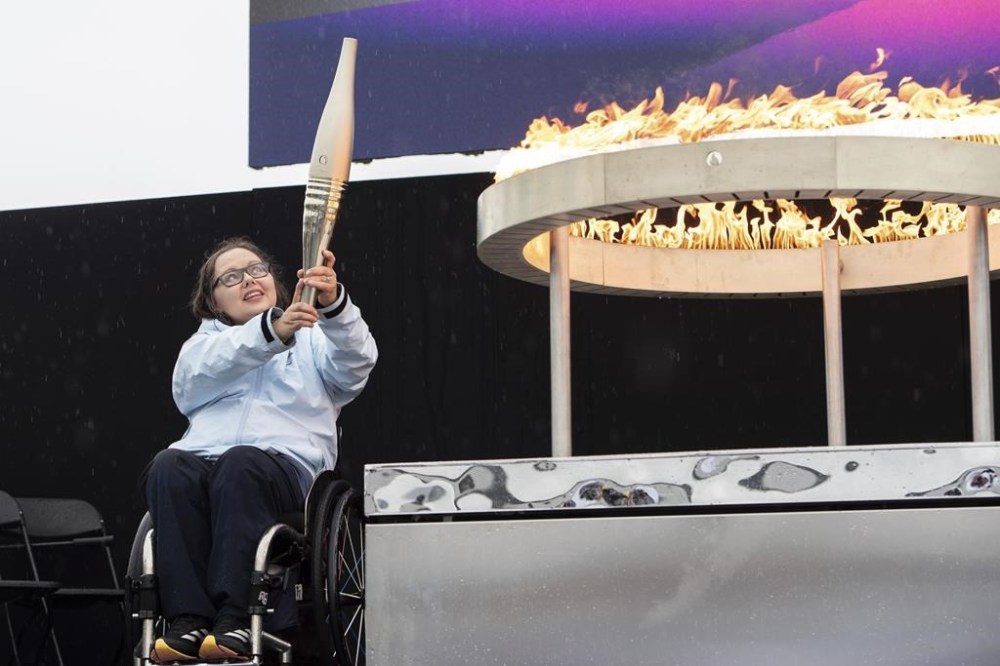What sports are in the Paralympics and how does the classification system work?
Advertisement
Read this article for free:
or
Already have an account? Log in here »
To continue reading, please subscribe:
Monthly Digital Subscription
$0 for the first 4 weeks*
- Enjoy unlimited reading on winnipegfreepress.com
- Read the E-Edition, our digital replica newspaper
- Access News Break, our award-winning app
- Play interactive puzzles
*No charge for 4 weeks then price increases to the regular rate of $19.00 plus GST every four weeks. Offer available to new and qualified returning subscribers only. Cancel any time.
Monthly Digital Subscription
$4.75/week*
- Enjoy unlimited reading on winnipegfreepress.com
- Read the E-Edition, our digital replica newspaper
- Access News Break, our award-winning app
- Play interactive puzzles
*Billed as $19 plus GST every four weeks. Cancel any time.
To continue reading, please subscribe:
Add Free Press access to your Brandon Sun subscription for only an additional
$1 for the first 4 weeks*
*Your next subscription payment will increase by $1.00 and you will be charged $16.99 plus GST for four weeks. After four weeks, your payment will increase to $23.99 plus GST every four weeks.
Read unlimited articles for free today:
or
Already have an account? Log in here »
Hey there, time traveller!
This article was published 26/08/2024 (467 days ago), so information in it may no longer be current.
PARIS (AP) — Being the follow-up act to the Paris Olympics is no easy task, but the Paralympic Games that begin Wednesday promise to offer up their own fair share of memorable sporting moments.
This is an event that highlights the human ability to overcome hardships and disabilities, so the word “insurmountable” isn’t one you’re likely to hear in Paris over the next two weeks as around 4,400 athletes with a wide range of life-impacting impairments compete for medals in 549 events across 22 sports.
“If it seems impossible, then it can be done!” Italian fencer Bebe Vio says on her website.

She will be vying for her third consecutive gold medal in wheelchair fencing. After contracting meningitis as a child, doctors amputated both her forearms and both her legs at the knees to save her life.
Here’s a look at some of the other events that athletes will be competing in at the Paralympics and how competitors are categorized based on their disability or impairment.
Which sports are in the Paralympics?
Of the 22 Paralympic sports, only two do not have an Olympic equivalent — goalball and boccia.
Goalball is played on an indoor court the size of a volleyball court with goals set up at each end. Teams of visually impaired or blind players (wearing eyeshades to ensure fairness) take turns rolling a ball containing bells toward the opposing goal while the defending team’s players act as goalkeepers.
In boccia, players throw or roll leather balls as close as they can to a small ball called a jack.
Other wheelchair sports include basketball, fencing, rugby and tennis.
The other sports are sitting volleyball, blind soccer, and para archery, athletics, badminton, canoe, cycling, equestrian, judo, powerlifting, rowing, shooting, swimming, table tennis, taekwondo and triathlon.
Blind soccer involving teams of five playing with a ball containing rattles will be played beside the Eiffel Tower.
Who can qualify to compete at the Paralympics?
To compete at the Paralympics, athletes must have “an underlying health condition that leads to a permanent eligible impairment,” the International Paralympic Committee says.
Impairments can be caused by the likes of cerebral palsy, traumatic brain injury, multiple sclerosis, muscular dystrophy, amputations, physical injuries or an intellectual impairment, blindness or reduced sight.
How are athletes classified?
To ensure fair competition between Paralympians, athletes are grouped by how limited they are by their impairment — in other words, how much of an effect it has on their ability to compete in their chosen sport.
The classifications aim to ensure that every competitor has a fair chance to win and that “sporting excellence determines which athlete or team is ultimately victorious,” the International Paralympic Committee says.
Different types of impairments
The Paralympics divide impairments into the three groups: physical, visual and intellectual. Physical impairments are further divided into eight categories, including impaired muscle power, impaired range of movement, limb deficiency and short stature.
Every individual Paralympic sport determines which impairment types they have competitions for.
Some, like para athletics and para swimming, have competitions for athletes with every type of impairment, while others have just one category. Goalball, for instance, is only for teams of players who are blind or visually impaired.
Assessment and sports classes
All Paralympians undergo an assessment by a panel of experts to determine which sports class they should compete in based on the degree and nature of their impairment. Each sport has its own criteria for how to assess the eligibility of competitors. Some, like para powerlifting, only have one sports class. Para athletics, which is open to athletes with any impairment, has more than 50 sports classes.
The classification system focuses on grouping together athletes with similar functional abilities rather than similar disabilities, so athletes with different impairments can compete against each other if they are allocated to the same sports class.
___
AP Paralympics: https://apnews.com/hub/paralympic-games











